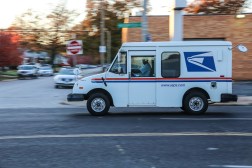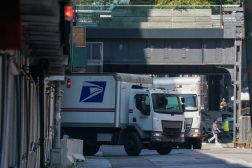 USPS Vice President of Information Technology John Edgar (Photo: FedScoop)
USPS Vice President of Information Technology John Edgar (Photo: FedScoop)The U.S. Postal Service handles 160 billion pieces of mail per year and, starting in January, a new barcoding system will allow the agency to know the location of nearly every one of them.
For John Edgar, the Postal Service’s vice president of information technology, that presents both a tremendous challenge and opportunity as he looks to create systems that manage that flood of information and help the Postal Service refine its business processes and become more efficient.
“When that system goes into place there will be a tremendous amount of data,” Edgar said. “We’ll be able to see the processing efficiency, bottlenecks in the system and much more. We can drive a lot of process change with that data.”
That’s in addition to possible changes to the mail delivery schedule.
Last month, the Postal Service announced its intention to go to a 5-day per week mail delivery schedule with packages six days per week. Those operational changes create the need for updated systems and processes as well.
Edgar said his job is to be ready when the new schedule is enacted in August and is preparing for new delivery route scheduling on Saturdays for packages and what could eventually be new carrier routing processes during the week.
“We are all doing what we have to do to make sure we can enable and support the separation of delivery activities,” Edgar said.
That goes hand-in-hand with the Postal Service’s new same-day delivery offering that will alter delivery routes as well.
Under the same-day delivery pilot program, consumers will place online orders by 2 p.m., and the mailer will electronically manifest all of that information for the USPS to know what packages are available to be picked up. Between then and 4 p.m., the Postal Service will pick up the packages from the mailer location, bring them back and distribute them to carriers, with route directions, for delivery that evening. This requires creation of new routes each day based on available packages.
“It’s a very different model because things will change every day as carriers will no longer do the same path every day,” Edgar said. “From an IT standpoint there is now a tremendous amount of additional information to be used, from collecting and processing the mail to coming up with the most efficient routes. It’s a complete change to how we’ve done things.”
And finally, Edgar said he is about to roll out a new package tracking system, replacing one that had been in use for more than 16 years and had become outdated and expensive to operate.
He said the Postal Service is migrating to a newer high performance platform that is able to handle the package growth the service expects to see over the next five years. And not just the packages, but the increased amount of information that will exist about each package.
“We’re at an exciting place where we can bring in technologies that help us operate at higher levels.” he said.






